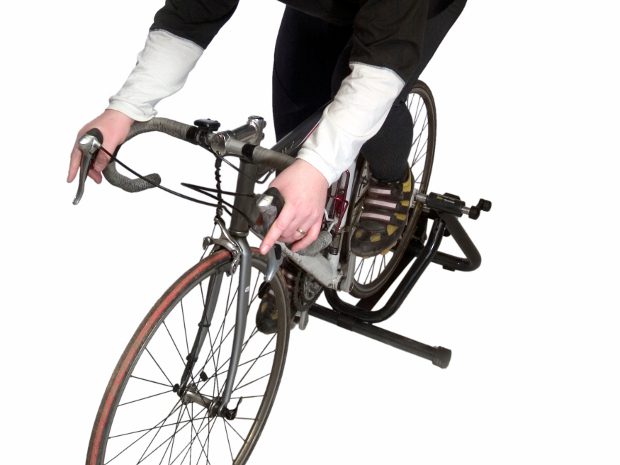Ready your road bike for trainer season
If the thought of wet roads throwing salt and sand into every nook of your bike worries you, it’s best to avoid taking your nice road bike outside during the winter.

by Chad Grochowina
If the thought of wet roads throwing salt and sand into every nook of your bike worries you, it’s best to avoid taking your nice road bike outside during the winter. (Because the season can tax a bike’s components, I strongly recommend riding a dedicated winter bike.) But the cold months can mean a new riding season if you bring the nice bike inside. To make the transition from road to trainer, you should make a few preparations so everything will continue to run smoothly.
Although regular road tires will work fine on an indoor trainer, you’ll quickly find that they don’t last very long. The trainer’s roller tends to square off the rear tire after just a couple hours of use. The roller also heats up the rubber, causing an odour. For these reasons, it’s worth buying a dedicated trainer tire, which costs roughly $60. It’s made from a harder rubber compound that is meant to last much longer. It also runs cooler and won’t send tiny pieces of rubber flying all over your basement.
Before you set up on the trainer, give your bike a thorough cleaning, paying special attention to scratches and chips. Putting a coat of wax on the paint (I like lemonscented Pledge) will help with future cleaning. Cleaning and greasing your pedal threads will pay dividends the next time you need to remove them. Also, a thin, dry lube on the chain will last a long time and keep things cleaner for those times you accidentally brush up against it.
Like road salt, your sweat can be corrosive and do irreparable damage to your bike. I’ve seen many steerer tubes, crankarms and pedal spindles heavily pitted from corrosive sweating. If you sweat a lot, a product like the Blackburn Sweat Net is a great addition as it catches a lot of perspiration before it hits your bike. Clean bearing races coated with fresh grease will act as a sweat barrier. Pay special attention to the headset area as it sees the most sweat over the course of a trainer session. This bit of maintenance should also address any creaks that might have developed during the outdoor riding season.
After each trainer session, take a couple of minutes to wipe your bike down. Just like at the gym, a mild vinegar-and-water solution sprayed on and wiped off will help keep things clean and will also help break down all that sweat.
If you’re getting a good workout on your trainer, it will be as if you got hit by salty ocean waves. The salt damage and corrosion often happen from the inside out. By the time you realize the extent of the damage, it can be too late. Some pre-emptive bike maintenance will go a long way the next time you have to take your bike apart for service.

